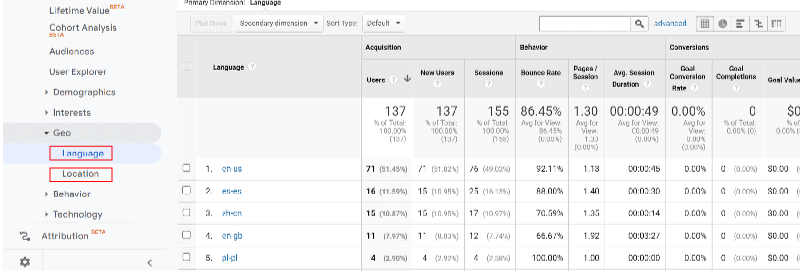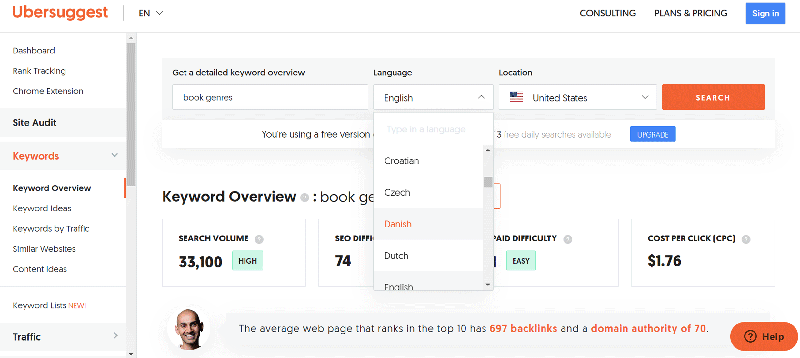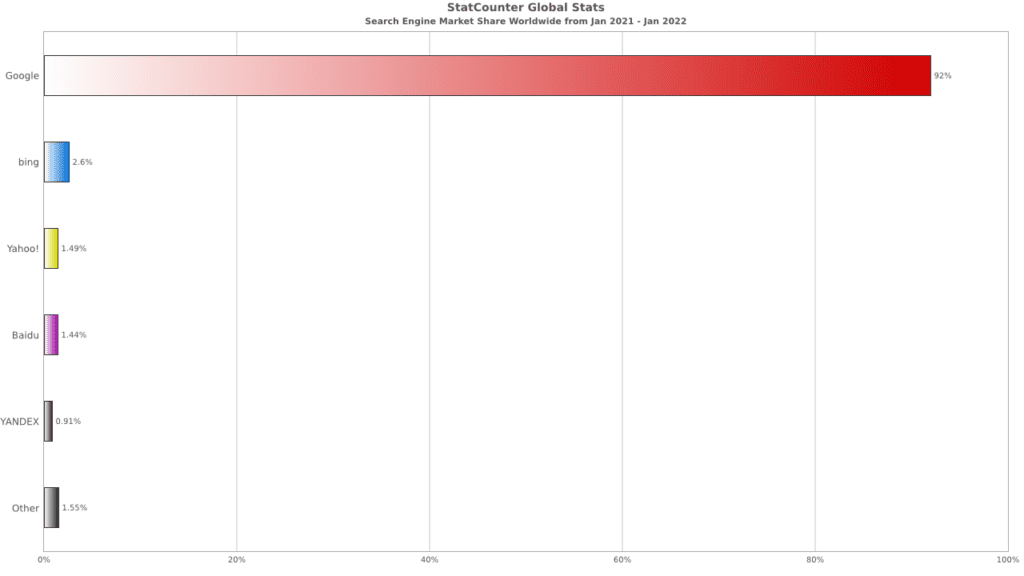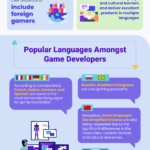Listen to the article
Your business game is growing and at some point, you decide to go global. For this, you need to develop your overall business strategy, which includes both localizing the game and adapting your marketing to the local markets. As a key part of your content strategy, online communication starts with having a multilingual website that will help to engage with your customers in their own language. Even if this is the first step in reaching an international audience, it’s just not enough. If you want to rank well on search engines to drive organic traffic to your site and increase sales, you need to develop and implement an international SEO strategy.
As it takes into consideration the unique linguistic, cultural, and technical requirements needed for local engines, global SEO adds an additional level of complexity to your localized website. You need not just to adapt your site to the local markets, but also to optimize it for multiple languages and implement some SEO best practices if you want to be successful. And this can seem a little overwhelming, at least at first glance.
But it doesn’t necessarily have to be that way. The goal of this article is to make multilingual SEO much easier and show you the key steps for creating an effective strategy. Then, to help you apply these principles to your website, we’ll share an SEO strategy checklist you can use to make sure you haven’t missed anything.
Let’s start!
What is international SEO?
In a nutshell, international SEO means improving your website’s organic search rankings in multiple languages. Instead of only ranking your content in one language (English or French, for example) you also rank your content in multiple languages like Brazilian Portuguese, Italian, Korean, Turkish, and so on.
This way, you can…
- Increase the number of keywords you can rank for (because you’ll be able to rank for keywords in different languages);
- Connect with more people by improving your search visibility. For example, ranking in both Google.com and Google.de;
- Create a more user-friendly experience for your audience because they’ll be able to browse in their own language and have a personalized experience.
To target multiple languages, you must create a multilingual website and localize your content.
And here comes the international SEO strategy. While basic on-page SEO principles apply in any language, there are some specifics you need to consider when developing and implementing an SEO strategy for a multilingual website.
How to create your international SEO strategy
As well as for any strategy, to make your SEO efforts successful, it’s crucial to do your homework and develop a coherent strategy and implementation plan. Here are the steps you need to consider:
#1 Decide on the market(s) and language(s) you want to expand first
Regardless of your gaming business size or your budget, expanding on multiple markets is costly, but foremost, it’s risky. Therefore, the best solution is to prioritize. On which market should you enter first? Where is your game most wanted? – these are the first questions you need to answer.
Making your research is one of the most vital steps in your global SEO strategy. You can start by looking at the tabs for Language and Location in the Geo option in your Google Analytics account.

If you’re already doing business internationally, pay attention to the languages and countries converting best on your website.
But if you’re not yet acting globally, you can still use the information from the Language and Location tabs – consider the users’ behavior, especially clicks, engagement, and time spent on your site. You can also find useful data when looking at the Audience tab:

Often, a smaller country or one that belongs to the emerging markets can convert better than more affluent countries. Therefore, you should never assume that if a country is bigger or richer, it will convert well.
Just check your data. Seeing where your traffic is coming from can really help you to make the best decisions.
#2 Perform competitor research
Researching your competition is also vital, as you can find information about their SEO strategy, what is performing best for them, and what not.
You can use a tool like Ahrefs, SEMrush, or Moz – insert their website’s URL, and look for the highlighted countries to see the regions where they rank well. Once you’ve found out which of your competitors to look up for their digital achievements, move it’s time to find out the best keywords you can borrow from them.
#3 Conduct an international keyword research
After identifying your primary competitors, determine which keywords they are indexed for in your target countries and select the best ones for your SEO.
If you’re already implementing an SEO strategy in your site’s original language, you should know the importance of finding the best keywords to rank for.
Keyword research allows you to find out what people are searching for; this way, you can optimize your content for the search terms that offer the best ROI. The same principle applies to your international SEO strategy. If you expand to multiple countries, you’ll need to perform keyword research in each language you’re targeting.
Luckily, the most quality keyword research tools on the market allow you to filter keyword suggestions based on their search volumes and Keyword difficulty in searchers’ languages. This includes KWFinder, Ubersuggest, Ahrefs, SEMrush, etc.

#4 Consider local search engines
When most people think of SEO, they think just about Google. And that’s for a good reason, as Google is the dominant search player in most countries worldwide. Still, it’s not dominant in all countries or regions. According to the data of StatCounter, the top 10 list of worldwide search engines includes Google, followed by Bing from Microsoft, Yahoo, Baidu, Yandex, AOL, Ask.com, Mail.ru, DuckDuckGo, and others.

Therefore, when developing your international SEO strategy, you need to research whether Google is the major search engine in your target markets or if you need to optimize your content for a different search player.
For example, if you want to target countries like China or Korea Google is not the dominant search engine or it has a legitimate competitor:
- China – Baidu is the dominant search player, followed by Shenma Sogou and Haosou, while Google comes in 4th place in the users’ preferences, with just a 1,99% market share.
- North Korea – even if Google is preferred by 73.96% of users, it has strong competition from Naver and Daum
- South Korea – Naver is the most popular search engine.
And the list can go on.
#5 Localize your brand to succeed with your international SEO efforts
Now that you’ve established your keywords and know the search engines you need to optimize your message for, it’s time to start creating content in the local language. The first step is to localize your website pages. Keep in your mind that it’s not enough just to simply translate the original text into the targeted language and stuff it with keywords. You need to consider special local aspects as well.
For example, you need to be careful with the forms of ‘you’: in Germany, Italy, Spain, and many other countries you should use the polite form of ‘you’ when talking to someone you don’t know. Also, keep in mind that, for example, Germans are much stricter in the use of formal ‘you’ than Italians.
You should also pay attention to the sign-up forms – in Japan, people generally avoid giving out too much information because they value their privacy. Therefore, if you ask for more than the email address, you are highly likely not to get significant conversions, but an increase in bounce rates.
Here are some examples of additional localization steps you need to consider:
- display different images based on a user’s language so that you can make sure every image is localized;
- update cultural references according to the target market you want to expand to;
- use the local currencies and units of measure (for example, Metric instead of Imperial);
- adjust your site’s layout to make sure it fits the size and other characteristics of each language;
- adjust the format for dates and numbers. For example, day/month/year vs month/day/year.
#6 Create content that’s relevant to your local audience
While you may identify local trends within your original keyword research, local competitors’ sites can help you to identify other local search behaviors that could be worth including in your keyword research.
Knowing your target audience is vital. Therefore, working with local marketers, translators, and editors native to your foreign target market is important if you want to understand and provide a personalized user experience to your local audience. This includes the localization of marketing content and a content localization strategy.
#7 Monitor, measure and optimize your international SEO strategy
The last step in developing an effective SEO strategy is to measure and monitor your performance to adjust your approach and improve long-term performance.
Google and Bing provide free tools to measure performance and identify any errors on your site in Google Search Console and Bing Webmaster Tools which are useful for seeing how these search engines are crawling and indexing your sites. You’ll most likely also need to use other SEO tools to monitor your keyword rankings in different search engines, so make sure you select one that supports all the territories and languages you’re targeting.
It is important to analyze the performance of each market/language individually. Evaluate each KPI for each audience and suggest strategic changes based on this information. For sanity’s sake, tie everything back to your business goals and overall marketing communications strategy.
Use the insights you get to get better results for every audience and get a better profit in all the markets you’re in.
While hundreds of tools are to analyze your international SEO efforts, you should hire an SEO professional with experience in multiple markets before developing your SEO strategy. Also keep in mind that significant SEO results take time.
Final words
When developing a multilingual online communication strategy, there are several important SEO factors to consider.
Evaluate your SEO potential in your target countries, analyze the competitive landscape, and pull together a list of the most profitable keywords for your global SEO. Then you need to define a clear intended reader for each page and ensure that your localized content is not considered a duplicate of your original one.
By addressing these issues, you will have an effective international SEO strategy and boost your rankings and improve the overall user experience in every country.






